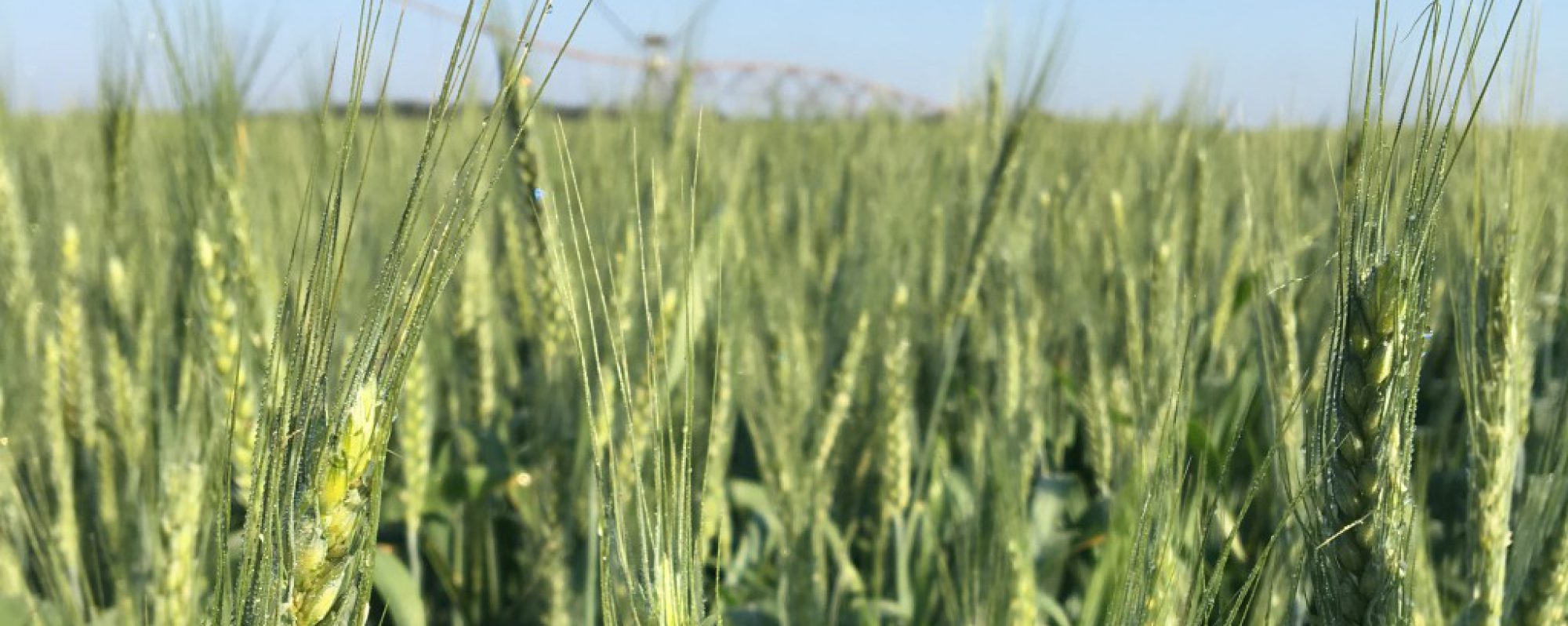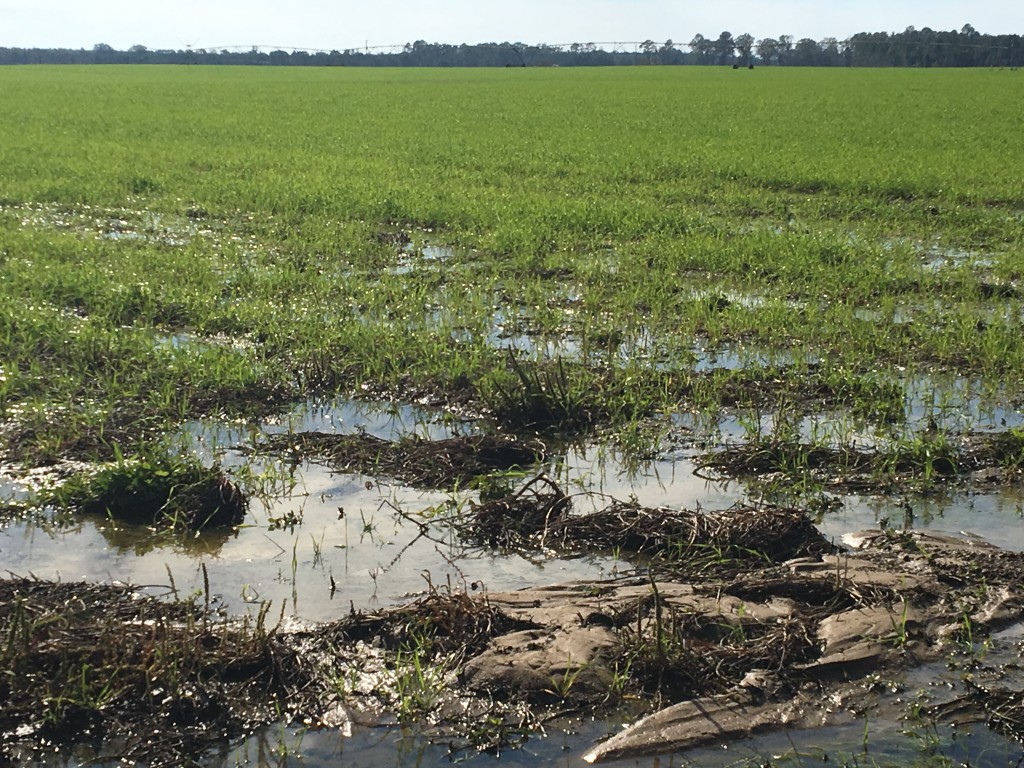
As we approached November, growers made the comment that this was a season we were ready to put in the books. And then it started raining, and raining and raining. We’ve had a few sunny days since this picture was taken on Nov 19th. This is what Wilcox County looks like from 2 straight weeks of rain, then more rain over Thanksgiving (and more to come.) The Monday before Thanksgiving may have been the first full sunny day in the previous two weeks. We saw about 8 inches of rain in those weeks, 4 inches came in one night for some. At Thanksgiving, there was essentially no progress made since the first of November. This was one of our first sunny, non-rainy days.
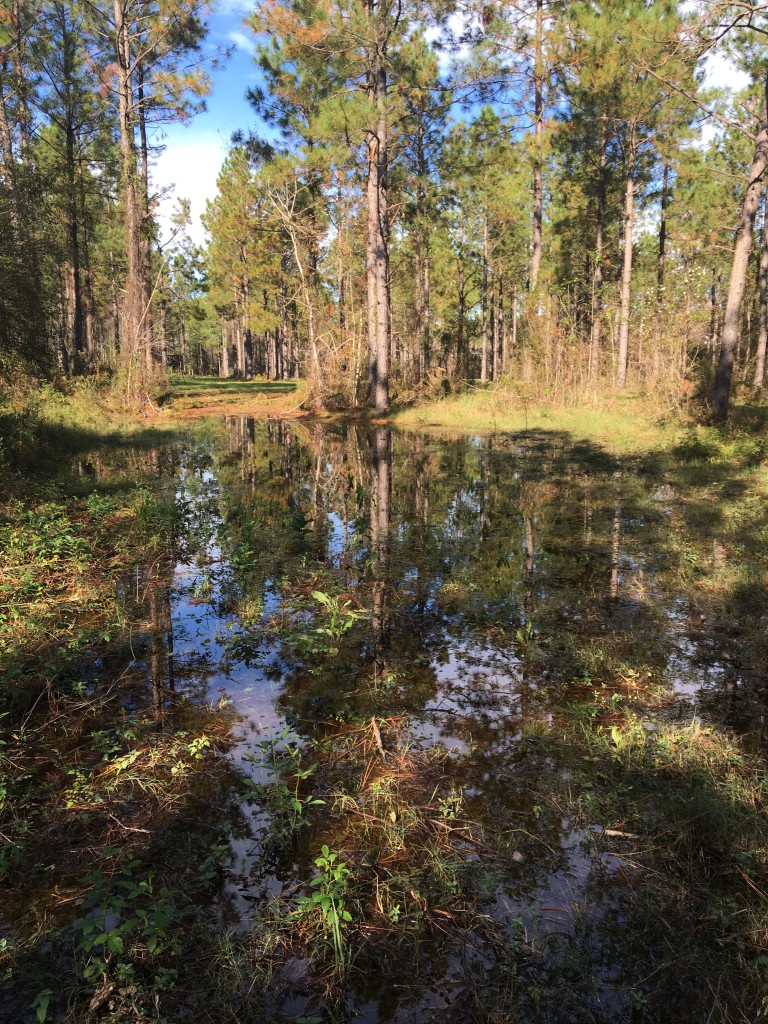
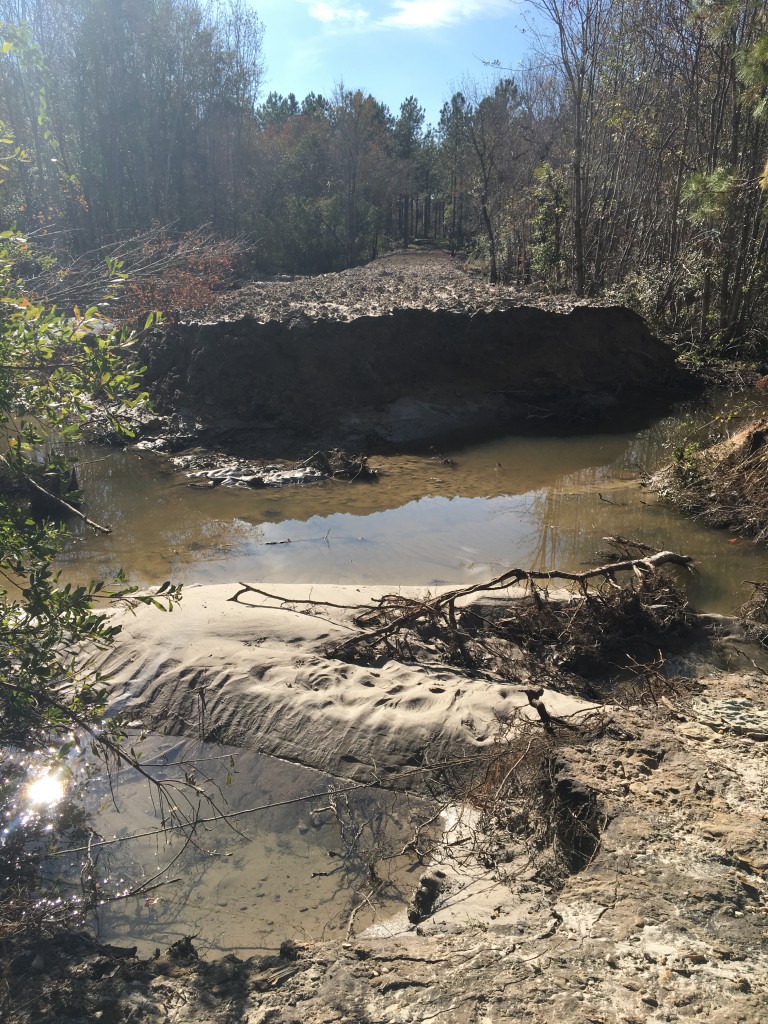
Most of our forage was able to be planted in October. This is ideal. Some planted later would have some trouble with saturated soils. We still got a lot to pick in our cotton crop, and our late planted cotton that did better in the hurricane has now been in a lot of rain. This happened in 2015 as well, and it’ll affect our color grades some. It also stalled all peanut digging and picking. We’re about the same as we were at the first of November.
Soybeans
On Monday the 19th, our soybeans were 75% harvested. Here is 70 acres left that has sit through all this rain. You can see where we have some blown over plants. In terms of harvest, this is not a big deal. The main issue here is a pathogen affecting pods called phomopsis pod and stem blight. You get phomopsis and/or anthracnose when we go through rain like this. The pathogens easily spread by wind and splashing rain that move spores through the field. This is going to hurt our quality. We’re seeing yield decline considerably as well. And we were having really good yields before now. The good news so far is that we have not had a load rejected. We are almost done with our soybeans. Some of the beans in the pods did not finish filling out as well. Definitely a lot going on in this situation.
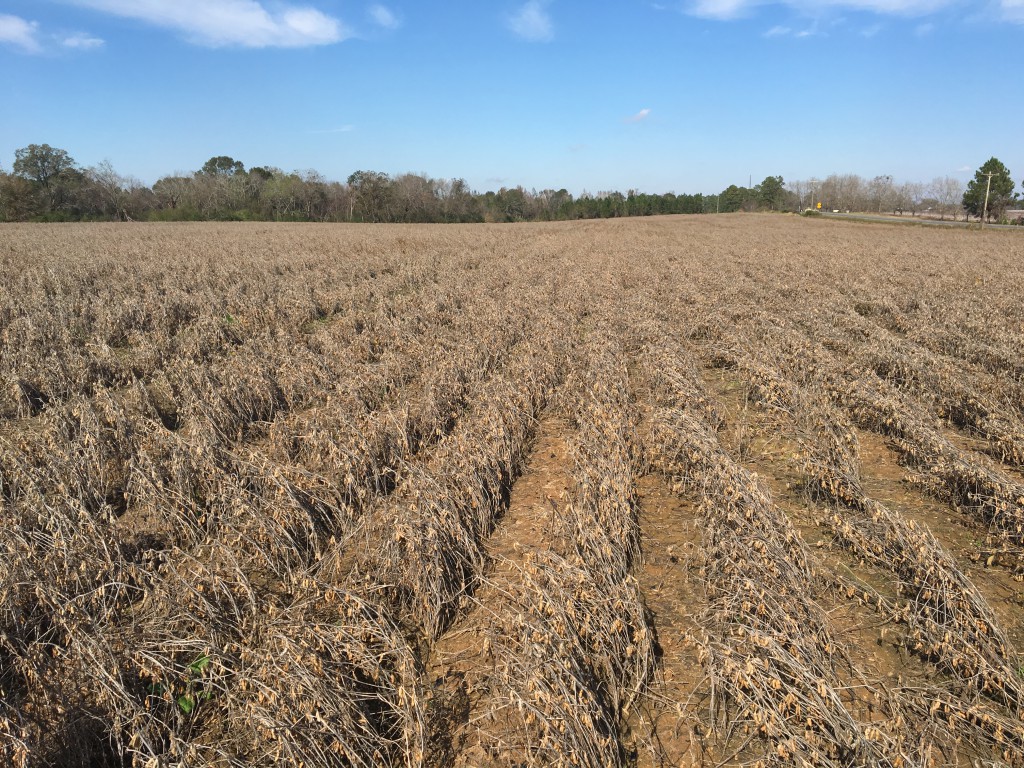
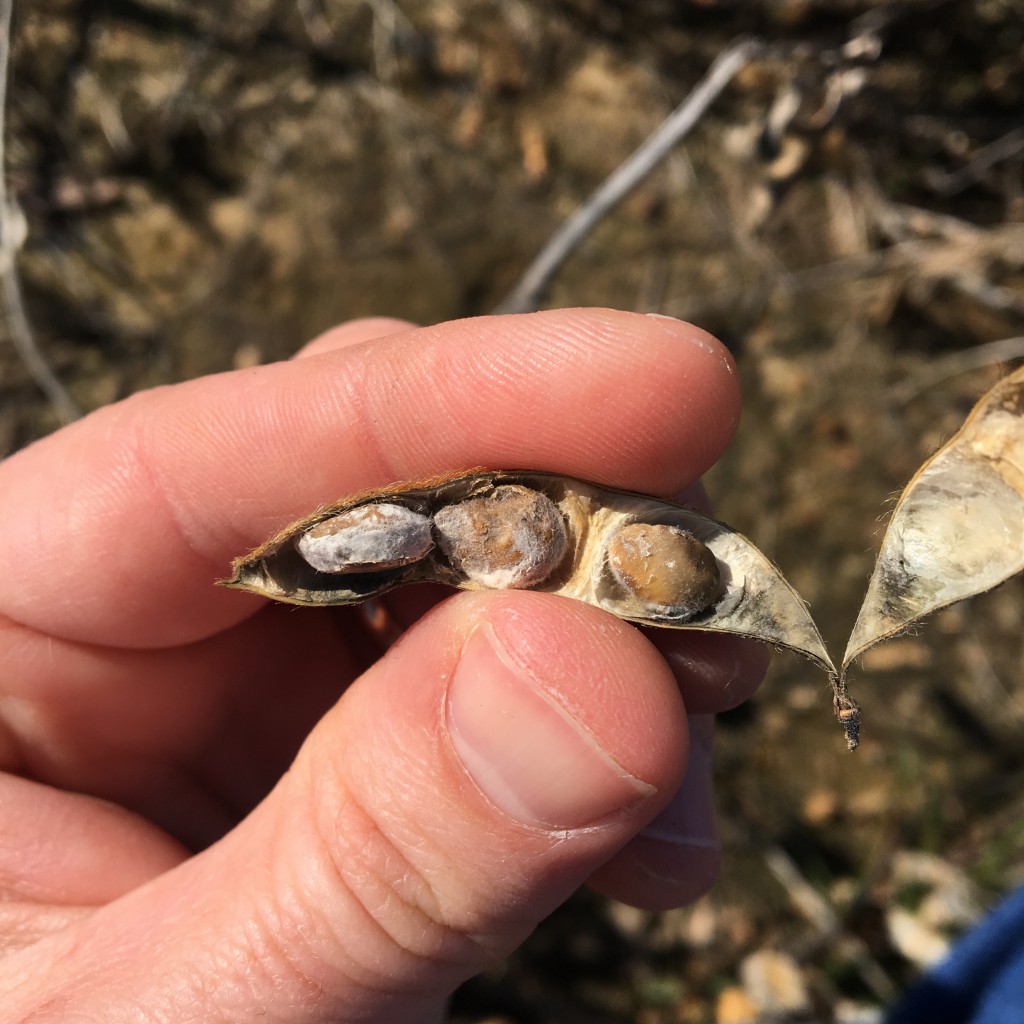
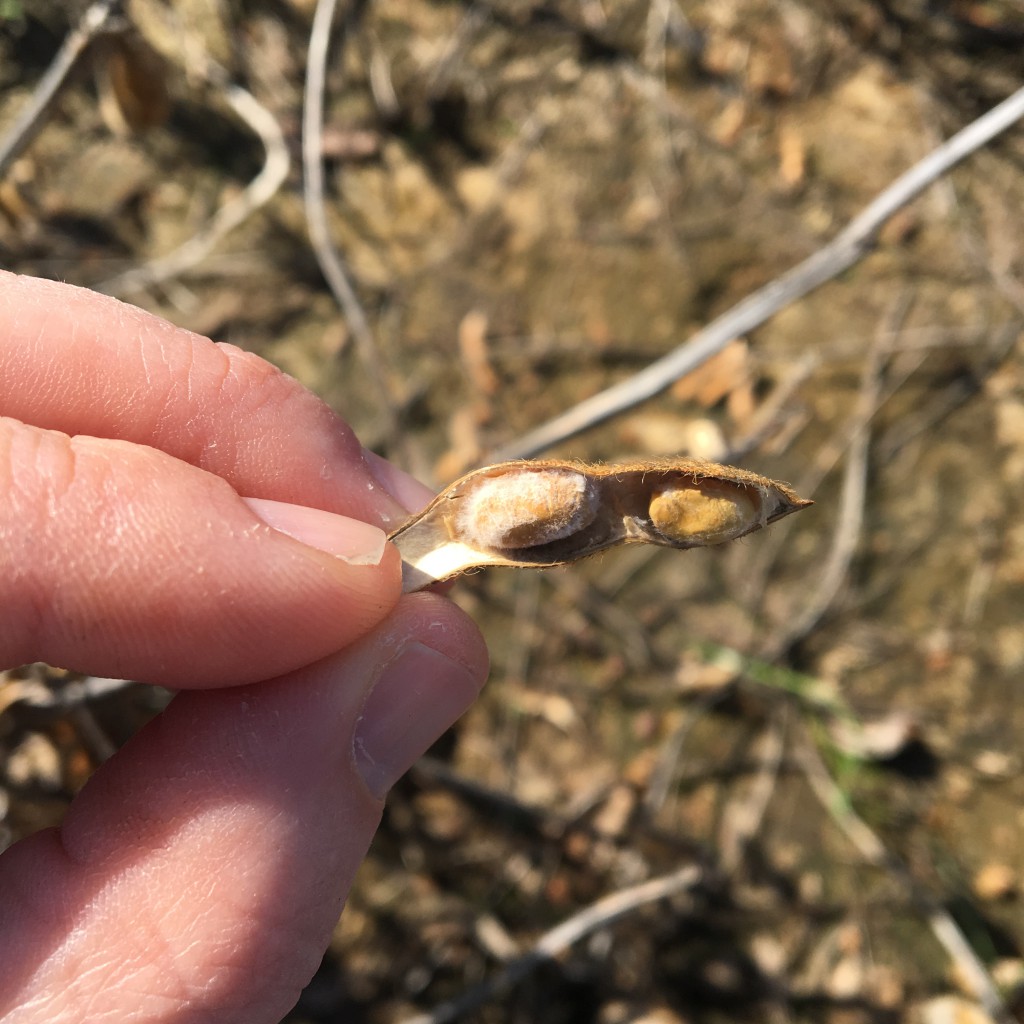
Peanuts
The rain has kept us from finishing our peanut crop. Some peanuts were on the ground when the rain started and could not be harvested until after. But those peanuts are still okay once they dry out. We have probably 700-800 acres left to harvest in the county. The state is touching 90% on harvest after talking with UGA Peanut Agronomist Dr. Scott Monfort. Cold would be a bigger issue if peanuts were on the ground, but growers watch that carefully. So far no cold damage on our crop. Grades have actually been good with peanuts picked after rain.
Cotton
As I mentioned above, we actually had more rain in 2015 this time of the year and saw color grades affected. The biggest issue for cotton was that we went 2 – 3 weeks of not just rain, but no sunny weather. This is where our color grade can be affected some. I haven’t got a number, but we still have a good bit of cotton to go in the county. This week, growers are really picking a lot. It looks like we still have more rain ahead.
Pecan
The rain certainly doesn’t help here as the price is really dropping even for yard pecans. The nuts have sat on the ground for so long, most are rotting. If there is some good news, growers are cleaning up orchards and there are some nuts on the trees they hope to shake and then harvest. UGA Extension Pecan Specialist Dr. Lenny Wells has this update on where we go from here as a pecan industry that I thought would be good to share:
I’ve had a lot of questions recently about the long-term effects of the Hurricane on our pecan trees and the pecan crops we can expect in the next few years. Until recently our state has not had to endure the after-effects of a direct hit by a major hurricane.
The impact of the extensive tree loss we have suffered will certainly be felt in a general drop in production over the next 3-5 years. For growers that lost 30-40% of the trees this will be a large hit if their orchards were not overcrowded. The long-term impact will be felt less in orchards that were overcrowded prior to the storm but it may take a few years for production to get back to where it needs to be. Many overcrowded orchards had young trees inter-planted among older trees. Where large older trees were destroyed, these younger trees and the remaining older trees will now have access to more sunlight, soil water, and air flow. Once these trees recover, they will be more productive and the orchard production should return to normal or may even improve somewhat. Orchards that lost more trees will feel the effects for a much longer period of time. In addition, surviving trees that have been broken up may be likely to develop heart rot and reduced vigor.
Trees remaining in orchards along the storm’s path will likely take time to recover. Many of these trees lost much of their fruiting wood in the storm. This will have to re-grow for a year because pecan flowers are generally borne on the new growth that develops from one-year old wood. Since many of the young shoots from the 2018 crop… were lost or damaged in many orchards, the trees will likely have to sit out a year to have very much production at all. Another thing to consider is that trees that were salvaged but were severely broken up will likely produce an over-abundance of water sprouts in the coming year. Such growth usually has a weak attachment point and is easily broken by wind once some weight develops on the ends of these sprouts. In certain situations, selective pruning can help alleviate this problem but often as we do this, the remaining shoots are left more exposed to the wind and will break as well, so it may be better in many cases to let mother nature prune these out until the limbs gain some strength.
Remaining trees also likely had a few roots broken as they were rocked back and forth by the wind. It will also take time for these roots to re-grow to support optimal growth and nut production. We will likely even see some trees that made it through the storm initially, begin to decline somewhat over time and possibly even die as a result of damaged root systems.
History can teach us a lot. If we look at what happened to pecan production in Mississippi following Hurricane Camille in 1969, we see that annual in-shell nut production of improved cultivars in Mississippi the decade prior to Camille averaged ≈3400 t per year, but only 1900 t per year the decade after Camille. The 1969 crop was estimated to be ≈4000 t, but dropped to 2800 t because of direct storm damage. In-shell yield the following year was 900 t, probably ≈25% of what it would have been without Camille. The intensity of alternate bearing increased by 258% during the 6 years after the storm. Production in 1970, the year following the storm, was only ≈27% of the average for the previous 5 years. Thus, slow recovery from hurricane-enhanced alternate bearing can be a long-term problem. For comparison, Camille’s winds were 100-65 mph as the storm moved inland. Michael’s winds were 115-100 mph as it moved from Bainbridge to Albany, falling off further from there.
I am frequently asked how all trees in an orchard or region can all get on the same cycle. Well, hurricanes are one of the environmental events that can do this. Since most trees within an orchard or region are similarly damaged from a hurricane, they all begin to bear on roughly the same cycles, resulting in little or no crop one year, followed by a heavy but low quality crop the next. Such trees and orchards may require 5–10 years to recover sufficiently to once again display relatively stable fruit production.
Most orchards in our affected area carried a heavy crop into the storm, so the trees were already set up to go into an “off-year” in 2019. Our production practices have changed a lot since 1969 and we like to think that with fruit-thinning, hedging, irrigation, spray programs, and fertility, our trees are in much better shape now. Hopefully our drop-off won’t be this severe. But as we can see, the potential is there for our production to be drastically affected. More recent experience with hurricanes in Alabama has shown that trees tend to be off in the year following the storm but come back surprisingly well the year after that.
Given all the young trees we have in this state, all the trees that will be re-planted, and the improved sunlight in orchards that survived the storm, my suspicion is that, on a state-level, we will certainly have an off year in 2019 but I am hopeful that we will see production begin to improve in 2020. While the total volume of pecans Georgia produces going forward will be reduced from what it would have been, I feel that we will return to levels of production in the state similar to what we were seeing prior to our planting boom within 5 years and we will be the top producing state again within that time period. This is a testament to our growers and the stewardship with which they grow the crop.
Hedging has proven to be one of the best management practices you can employ for minimizing hurricane damage. We saw with Tropical Storm Irma that we had a 60% reduction in wind damage in 2017 on hedged vs non-hedged trees. A similar trend was observed for hedged trees under Michael’s wind. Hedged trees can still suffer damage, but because they do not present as large a sail to the wind and do not have such long, hanging branches, the damage is reduced.
Growers who are re-planting should be looking to plant varieties that have better scab resistance and quality. Good options would include Avalon, Zinner, Ellis, Sumner, Kiowa, Caddo, Oconee, Creek, Cape Fear, and Excel. The merits of some of these varieties lie in scab resistance more-so than quality, while in others, quality is the biggest advantage. Some of these have both quality and scab resistance. Take a good look at your operation and consider which suits your situation best.
I think we have to start considering that we can’t continue growing pecans the way we have been. This marketing season has shown us that we can’t always rely on a good price to pull us out of the hole created by spraying 16 times or more in a season, no matter how large and high quality the nut may be. Ideally, we should be growing varieties that require 8 or preferably, fewer sprays.
A diversity of good quality cultivars with some level of scab resistance and being able to grow good yield with high quality on fewer inputs for a greater profit margin is going to be the key to the future of pecan production in our state. Its not really about how many pounds you can produce in a given year, its being able to produce consistently with the maximum amount of net profit and healthy, non-stressed trees that will remain consistently productive that makes you a good grower. The key to this is cultivar selection, sunlight, and water. Anybody can spend money (if they have it). If you spend more than you make, it doesn’t really matter how many pounds you grow.
